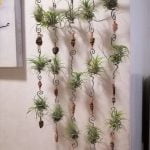When it comes to creating a beautiful and functional outdoor space, one key element that often gets overlooked is screening. In the realm of gardening, screening refers to the use of plants or structures to create privacy, block unsightly views, or enhance the overall aesthetic of a garden. For overlooked gardens, where certain areas may lack attention or feel exposed, screening ideas become essential in transforming these spaces into secluded retreats.
Identifying the specific needs of your garden is the first step in implementing effective screening solutions. Whether you’re looking to create a cozy nook for relaxation, hide an unattractive feature, or simply define different zones within your garden, understanding your goals will guide you towards selecting the right plants and design elements.
By assessing what areas require screening and determining the purpose you want it to serve, you can tailor your approach to suit the unique characteristics of your overlooked garden.
In this article, we will delve into various aspects of screening ideas for overlooked gardens, from plant selection options like trees, shrubs, and vines to design considerations such as proper spacing and maintenance requirements. Additionally, we will explore creative ways to utilize screening plants in your garden design, offer practical maintenance tips for their care, suggest budget-friendly options for those on a tight budget, and showcase inspiring before-and-after transformations for visual impact.
Stay tuned as we unlock the secrets to transforming your overlooked garden into a private oasis with innovative screening ideas.
Assessing Your Garden’s Needs
When it comes to overlooked gardens, the first step in transforming them is assessing their specific needs for screening. Determining what areas of your garden require screening and what purpose you want the screening to serve will guide you in choosing the right plants and design elements to enhance your outdoor space.
One common reason for implementing screening in a garden is to create privacy from neighboring properties or busy streets. By strategically placing screening plants, you can carve out intimate and secluded areas within your garden where you can relax and unwind without feeling exposed.
Another important aspect to consider when assessing your garden’s needs for screening is addressing any unsightly views that detract from the overall ambiance of the space. Screening plants can be used to block out unattractive features such as utility boxes, air conditioning units, or chain-link fences, seamlessly integrating them into the landscape while maintaining a visually pleasing environment.
Additionally, screening can help control noise pollution by acting as a barrier that absorbs sound waves, creating a quieter and more peaceful atmosphere within your garden.
In addition to providing privacy and improving aesthetics, screening in overlooked gardens can also serve functional purposes such as wind protection or creating microclimates for delicate plants. By evaluating your garden’s unique requirements for screening, you can make informed decisions on plant selection, placement, and design considerations that will not only enhance the beauty of your outdoor space but also improve its functionality and overall enjoyment.
| Aspect | Role |
|---|---|
| Privacy | Create secluded areas for relaxation |
| Aesthetics | Block unsightly views and enhance ambiance |
| Noise Control | Reduce noise pollution for a peaceful atmosphere |
Plant Selection
When it comes to selecting plants for screening in overlooked gardens, there are a variety of options available that can suit different needs and preferences. Trees, shrubs, and vines are popular choices for creating privacy, defining spaces, and adding greenery to your outdoor oasis. Each type of plant offers its own unique characteristics and benefits when used for screening purposes.
Trees
Trees can provide excellent screening in overlooked gardens due to their height and density. Evergreen trees like Thuja Green Giant or Leyland Cypress offer year-round coverage and can serve as a natural barrier against nosy neighbors or unsightly views. Deciduous trees such as Flowering Dogwood or River Birch also provide beautiful foliage and seasonal interest while still offering some privacy when in full leaf.
Shrubs
Shrubs are versatile plants that can be used for screening along property lines, around patios, or to block off specific areas of your garden. Some popular choices for overlooked gardens include Japanese Boxwood, Nellie Stevens Holly, or Forsythia. These shrubs come in various sizes and shapes, allowing you to create a customized screening solution that fits your garden’s layout and design aesthetic.
Vines
Vines are another great option for adding vertical interest and privacy to your garden. Climbing vines like Clematis, Honeysuckle, or Wisteria can be trained to grow on trellises, fences, or pergolas to create visual barriers or living walls. Vines offer a softer approach to screening compared to trees and shrubs while adding a touch of elegance with their cascading foliage and blooms.
By carefully selecting the right mix of trees, shrubs, and vines for your garden’s specific needs, you can create a lush and secluded outdoor retreat that feels like a hidden gem away from prying eyes. Consider the growth habits, maintenance requirements, and overall aesthetics of each plant before making your final decision on which plants to use for screening purposes in your overlooked garden.
Design Considerations
When incorporating screening plants into your garden design, it is essential to consider various factors such as spacing, height, and maintenance requirements. Before choosing the plants for screening, assess the specific needs of your garden. Determine the areas that require screening – whether it is to create privacy from neighbors, hide unsightly views, or block noise. Understanding the purpose of screening in your garden will guide you in selecting the appropriate plants.
Spacing plays a crucial role in the effectiveness of screening plants. Consider the mature size of the plants you choose and space them accordingly to allow for proper growth and coverage. Planting too close together can result in overcrowding and competition for resources, while spacing them too far apart may leave gaps in the screen. Additionally, be mindful of the distance between the screening plants and other elements in your garden to ensure a harmonious layout.
Another important consideration when incorporating screening plants into your garden design is determining the desired height of the screen. The height of your planting can affect its ability to provide privacy or block unwanted views effectively. Taller plants are ideal for creating more substantial screens but may require regular maintenance to keep them at the desired height.
On the other hand, shorter plants can be used to create partial screens or layered effects within your garden. Choose a mix of plant heights to create visual interest while fulfilling practical purposes.
| Factor | Consideration |
|---|---|
| Spacing | Plant based on mature sizes for proper coverage |
| Height | Determine desired height for privacy or view blocking |
Considering maintenance requirements is also crucial when selecting screening plants. Some plants may need regular pruning or shaping to maintain their form and density. Factor in your willingness and capacity to dedicate time for maintenance tasks when choosing plants for your garden design. By carefully considering spacing, height, and maintenance needs, you can effectively incorporate screening plants into your garden design to enhance its beauty and functionality both now and in years to come.
Creative Screening Ideas
When it comes to transforming an overlooked garden into a beautiful and functional outdoor space, thinking outside the box can make all the difference. One innovative way to use screening plants is by creating living walls. These vertical gardens not only provide privacy but also add a touch of lush greenery to your outdoor oasis.
To create a living wall, start by choosing a variety of plants that thrive in vertical spaces, such as ferns, mosses, and ivy. Consider using modular systems or planting pockets attached to a trellis or wall for easy installation. You can also incorporate flowering plants to add pops of color throughout the year. Not only do living walls enhance the aesthetic appeal of your garden, but they also help improve air quality and reduce noise pollution.
Another creative screening idea for overlooked gardens is to use natural privacy screens. Instead of traditional fences or walls, consider planting a row of tall and dense evergreen trees or shrubs along the perimeter of your garden. This not only creates a natural barrier for privacy but also adds visual interest and attracts wildlife to your outdoor space.
Some excellent options for natural privacy screens include arborvitae, Leyland cypress, and bamboo. Remember to consider the growth rate and mature size of each plant when designing your natural privacy screen.
- Consider incorporating trellises or arbors covered with climbing vines like clematis or wisteria for added charm.
- Integrate decorative elements such as hanging planters or outdoor artwork into your living walls for a personalized touch.
- For natural privacy screens, mix and match different plant varieties to create texture and depth in your garden design.
Whether you opt for a living wall or natural privacy screen, these creative screening ideas can transform your overlooked garden into a private sanctuary where you can relax and unwind surrounded by nature’s beauty.
Maintenance Tips
Maintaining screening plants in your garden is essential to ensure their health and longevity while continuing to serve their purpose effectively. Proper care and maintenance can help these plants thrive and enhance the overall beauty of your garden. Here are some tips to help you keep your screening plants in top condition:
- Regular Pruning: To prevent overcrowding and maintain a neat appearance, it is important to prune your screening plants regularly. Trim any dead or damaged branches, as well as excessive growth that can obstruct views or pathways.
- Watering: Adequate watering is crucial for the health of your screening plants. Be mindful of the specific water requirements of each plant species and ensure they receive sufficient moisture, especially during dry periods.
- Fertilization: Provide proper nutrients to your screening plants by fertilizing them according to their needs. Choose a fertilizer suited for the type of plants you have selected and follow the instructions for application.
- Weed Control: Keep weeds at bay around your screening plants to prevent competition for resources and minimize the risk of diseases. Regularly remove any unwanted vegetation that may hinder the growth of your desired plants.
- Pest Management: Monitor your screening plants for any signs of pests or diseases and take prompt action to address such issues. Implement organic pest control methods whenever possible to avoid harming beneficial insects in your garden.
By following these maintenance tips diligently, you can ensure that your screening plants remain healthy, vibrant, and functional in enhancing privacy, creating visual interest, or defining spaces within your overlooked garden. Taking care of these essential elements can contribute significantly to the overall success of your gardening efforts and provide long-lasting beauty throughout the seasons.
Budget-Friendly Options
When it comes to transforming overlooked gardens with screening ideas, budget-friendly options can be a great solution for those looking to make a significant impact without breaking the bank. By incorporating cost-effective screening ideas, you can create a beautiful and functional outdoor space while staying within your financial means. Whether you are on a tight budget or simply prefer to spend wisely, there are plenty of creative ways to enhance your garden with affordable screening solutions.
DIY Projects for Screening
One of the most budget-friendly options for creating screening in your garden is to embark on DIY projects. From building trellises and fences to crafting privacy screens using recycled materials, there are numerous ways to add privacy and beauty to your overlooked garden without spending a fortune. DIY projects not only save you money but also allow you to customize and personalize your screening solutions according to your preferences.
Affordable Plant Choices
Choosing the right plants for screening in your garden doesn’t have to break the bank. There are plenty of affordable plant options that can provide effective coverage and visual appeal. Consider selecting fast-growing shrubs or vines that require minimal maintenance but offer maximum impact.
Additionally, purchasing smaller-sized plants or opting for native species can help reduce costs while still achieving the desired screening effect in your garden. By being strategic with your plant selections, you can achieve an attractive screen without overspending.
Repurposing and Upcycling for Screening Ideas
Another budget-friendly approach to screening in overlooked gardens is by repurposing or upcycling existing materials. From using old wooden pallets as fencing panels to turning salvaged windows into decorative privacy screens, there are endless possibilities when it comes to creative reuse in garden design.
Not only does repurposing materials save money, but it also adds character and charm to your outdoor space. By thinking outside the box and getting creative with what you already have, you can create unique screening solutions that won’t break the bank.
Before and After
In conclusion, screening ideas can truly work wonders in transforming overlooked gardens into stunning and functional outdoor spaces. By carefully assessing your garden’s needs, selecting the right plants, considering design elements, and implementing creative solutions, you can create a beautiful oasis that provides privacy, beauty, and a sense of enclosure.
One of the key aspects of successful screening is maintenance. Regular care and upkeep of your screening plants will ensure their health and longevity, allowing them to thrive and fulfill their purpose in your garden. By following some simple maintenance tips and techniques, you can enjoy a lush and vibrant garden all year round.
Lastly, budget-friendly options are available for those looking to enhance their garden with screening ideas without breaking the bank. From DIY projects to affordable plant choices, there are plenty of ways to achieve a stylish and functional garden space on a tight budget. With some creativity and resourcefulness, you can create a visually stunning outdoor area that reflects your personal style and enhances your overall landscape.
Frequently Asked Questions
How Can I Make an Inexpensive Privacy Screen?
One way to create an inexpensive privacy screen is by using materials like lattice panels, bamboo fencing, or PVC pipes. These can be easily installed and provide some level of privacy without breaking the bank.
How Do You Make a Garden Privacy Screen?
To make a garden privacy screen, you can use natural elements like tall bushes, trees, or plants in strategic locations to block the view from outside eyes. You can also build a wooden or metal trellis and grow vines or climbers on it for added privacy.
What Is the Best Material for Garden Screening?
The best material for garden screening will depend on your specific needs and budget. Wood is a popular choice for its natural look and durability, while bamboo offers a tropical vibe and is eco-friendly.
If you prefer something low-maintenance, consider vinyl or composite materials that mimic the look of wood without the upkeep. Ultimately, choose a material that fits your desired aesthetic and maintenance requirements.

Welcome to my gardening blog! I am passionate about plants and enjoy sharing my knowledge and experiences with others. In this blog, I will write about everything related to gardening, from tips on how to get started to updates on my own garden projects.





